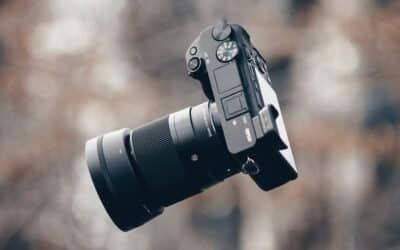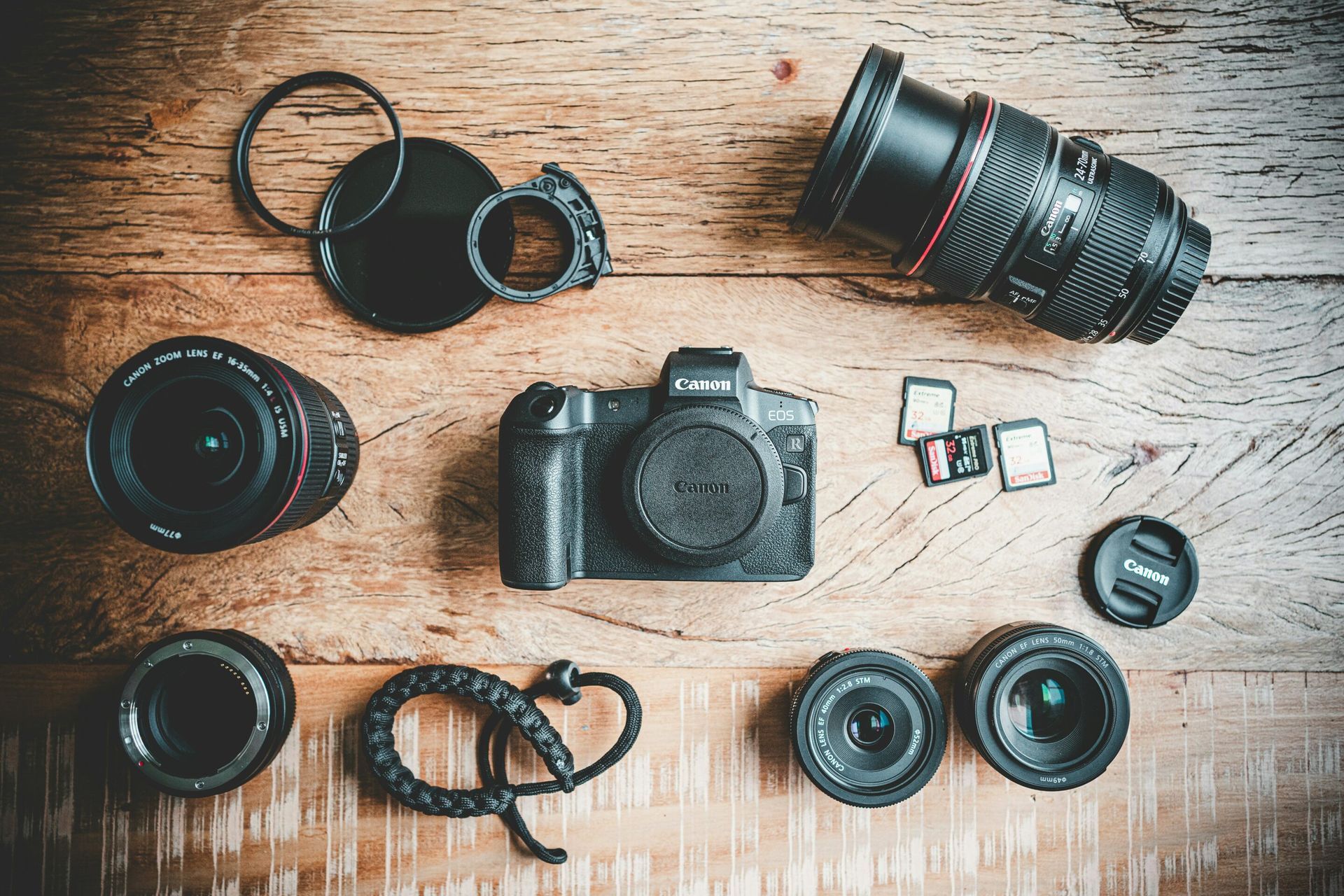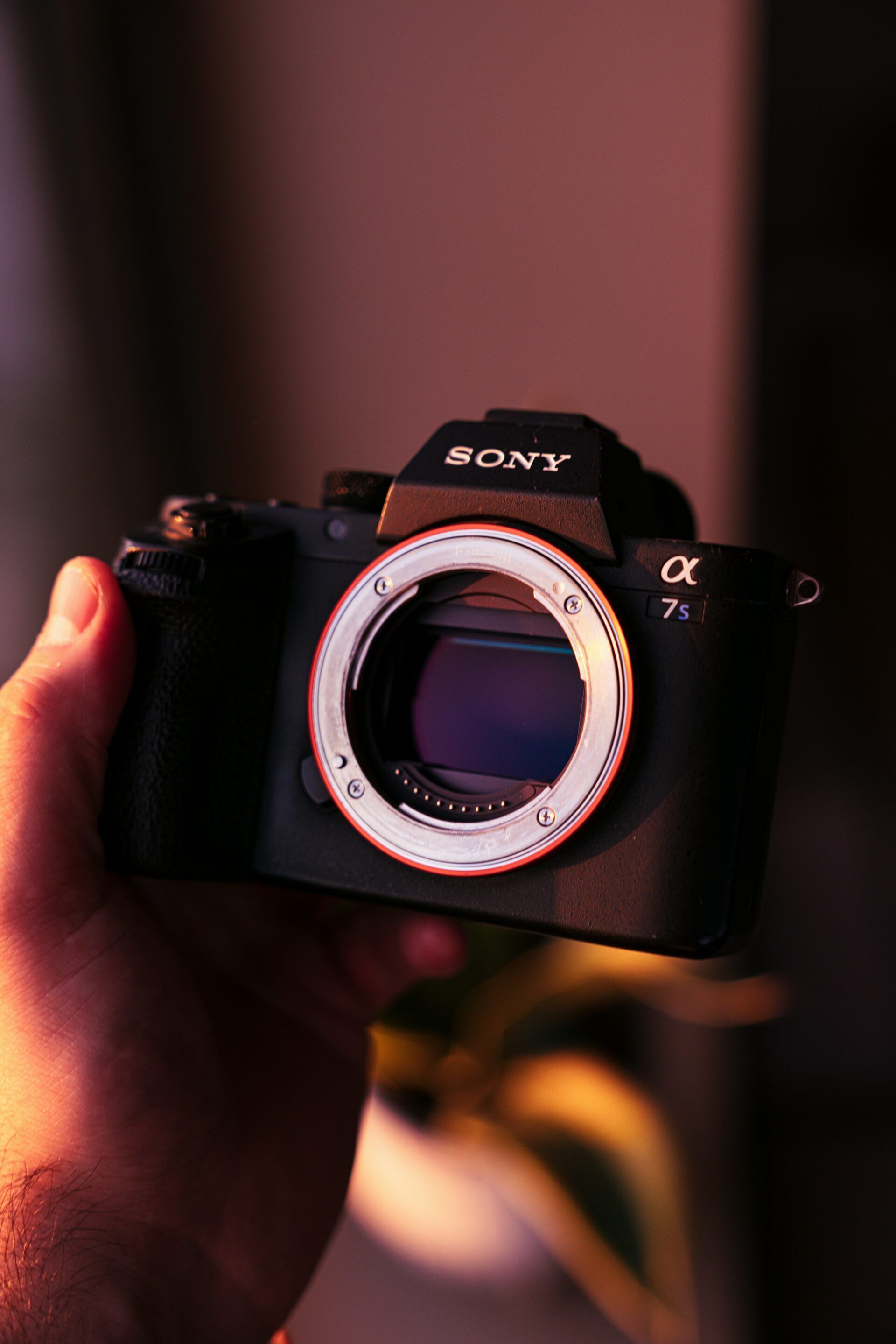
DSLR VS Mirrorless
As the world of photography continues to evolve, the debate between digital single-lens reflex (DSLR) cameras and mirrorless cameras is hotter than ever. Both types of cameras offer unique advantages and have their loyalists and detractors. In this blog, we’ll explore the current trends in photography equipment, focusing on the battle between DSLR and mirrorless cameras, to help you decide which might be the best fit for your photography needs. Let’s dive deeper into DSLR VS Mirrorless.
Understanding the Basics
DSLR Cameras:
DSLRs use a mirror mechanism to reflect light from the lens up into an optical viewfinder. This setup has been around since the film camera days and allows photographers to see exactly what the lens sees. Key advantages of DSLRs include their optical viewfinder, extensive battery life, and robustness. They typically have a vast range of lenses and accessories, thanks to their long-standing presence in the market.
Mirrorless Cameras:
Mirrorless cameras, as the name suggests, do not have a mirror inside. Instead, light passes directly from the lens to the image sensor, which then displays the image on the camera’s screen or an electronic viewfinder (EVF). This technology allows for lighter and more compact camera bodies. Additionally, mirrorless cameras often offer faster shooting speeds and superior video capabilities compared to DSLRs.
Trend Shift: The Rise of Mirrorless
The photography industry has seen a significant shift toward mirrorless technology in recent years. Major camera manufacturers like Sony, Canon, and Nikon are investing heavily in the development of mirrorless systems, with an array of new lenses and professional-grade features.
Innovation and Technology:
Mirrorless cameras are at the forefront of incorporating new technologies. Features such as eye-tracking autofocus, real-time exposure simulation, and high-resolution electronic viewfinders are becoming standard. These innovations are not only enhancing the user experience but also improving the technical capabilities of cameras in various lighting conditions and shooting scenarios.
Market Response:
According to industry reports, sales of mirrorless cameras have been steadily increasing, while DSLR sales are on the decline. This trend is partly due to consumers preferring the lighter weight, enhanced video capabilities, and the simplicity of use that mirrorless cameras offer. Professional photographers are also beginning to transition to mirrorless systems for their work, drawn by the advancements in mirrorless technology and the reduced weight, which is a significant factor during long shooting sessions.
The Future of DSLRs
Despite the growing popularity of mirrorless cameras, DSLRs are not going away anytime soon. They continue to offer superior battery life and optical viewfinders, which many photographers still prefer. DSLRs also tend to be more durable and better suited for extreme weather conditions, making them ideal for certain types of outdoor photography.
Economic Factors:
DSLRs generally provide more bang for your buck, especially for beginners and amateur photographers. The extensive range of available lenses and accessories, often at lower prices due to their compatibility with older models, makes DSLRs an economical choice.
Making the Right Choice
Choosing between a DSLR and a mirrorless camera ultimately depends on your specific needs and preferences:
- Consider your budget: Mirrorless cameras can be more expensive, especially at the higher end.
- Think about usage: If you prioritize video or desire a lightweight camera for travel, mirrorless might be the way to go. If you’re into wildlife or sports photography, the battery life and durability of a DSLR might be more beneficial.
- Test them out: Before making a decision, try both types of cameras to see which feels better in your hands and which interface you prefer.
The choice between DSLR and mirrorless cameras involves a range of factors including personal preference, intended use, and budget. As the trends show, mirrorless cameras are becoming more dominant in the market, but DSLRs still hold significant value for many photographers. Whichever you choose, both types of cameras can produce stunning images that bring your artistic visions to life.
As photography continues to evolve, staying informed about the latest technologies and trends will help you make the best choices for your photography journey.

Streamline Your Photography Business with Iris Works CRM
As you turn your passion for photography into a thriving business, managing your clients and shoots efficiently becomes crucial. This is where Iris Works CRM can significantly benefit you. Our intuitive customer relationship management (CRM) software is designed specifically for photographers to streamline their workflow, organize client data, schedule shoots, and keep track of all communications in one place. Whether you’re shooting with a DSLR or mirrorless camera, Iris Works helps you maintain a professional edge by automating administrative tasks, allowing you to focus more on your creative work. Embrace the simplicity and efficiency of Iris Works, and watch your photography business grow while ensuring every client interaction is seamless and professionally handled.





